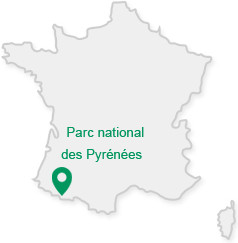The ibex has inhabited the Pyrenees for 80,000 years.
Particularly common in the 14th century, its population declined dramatically with the appearance of long-range weapons. The last two males were killed in 1910 near Gaube Lake, marking the disappearance of this species from the French side of the mountains.
After many long years, the Pyrenees National Park reintroduced nine examples of the species on 10 July 2014, at Pont d’Espagne. An additional 148 ibexes were then released in Cauterets, Gavarnie-Gèdre and Accous between 2014 and 2021.
In 2022, the population was estimated at around 335 in the national park, highlighting the success of this reintroduction programme.
Worth a visit - Where and when can I see it?
Ibexes can be seen between November and May at the bottom of the valley and on the sunny slopes of the Cayan plateau, the Ilhéou valley in Cauterets, and around the lakes of Liantran in the Azun valley.
In the summer, this excellent climber prefers the rocky peaks and ridges. It is not a particularly shy animal, but it is better to admire it from a distance through binoculars, to respect its tranquillity.



